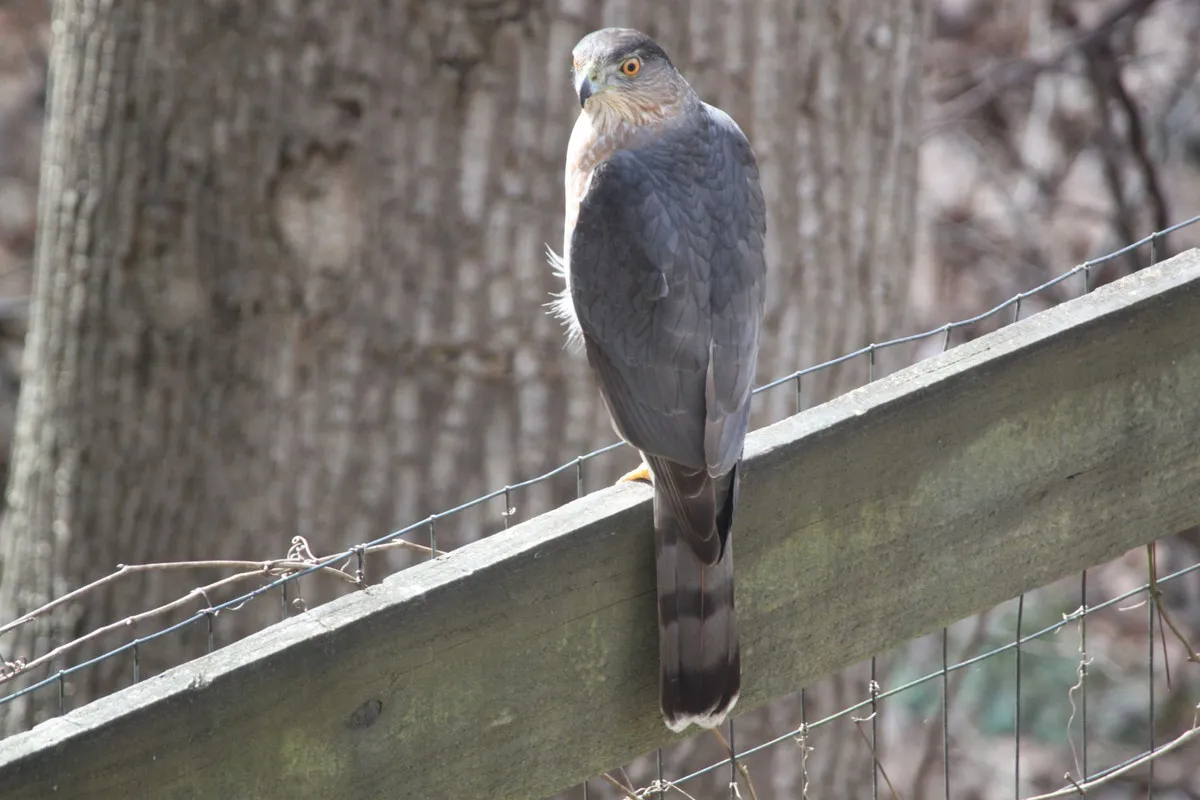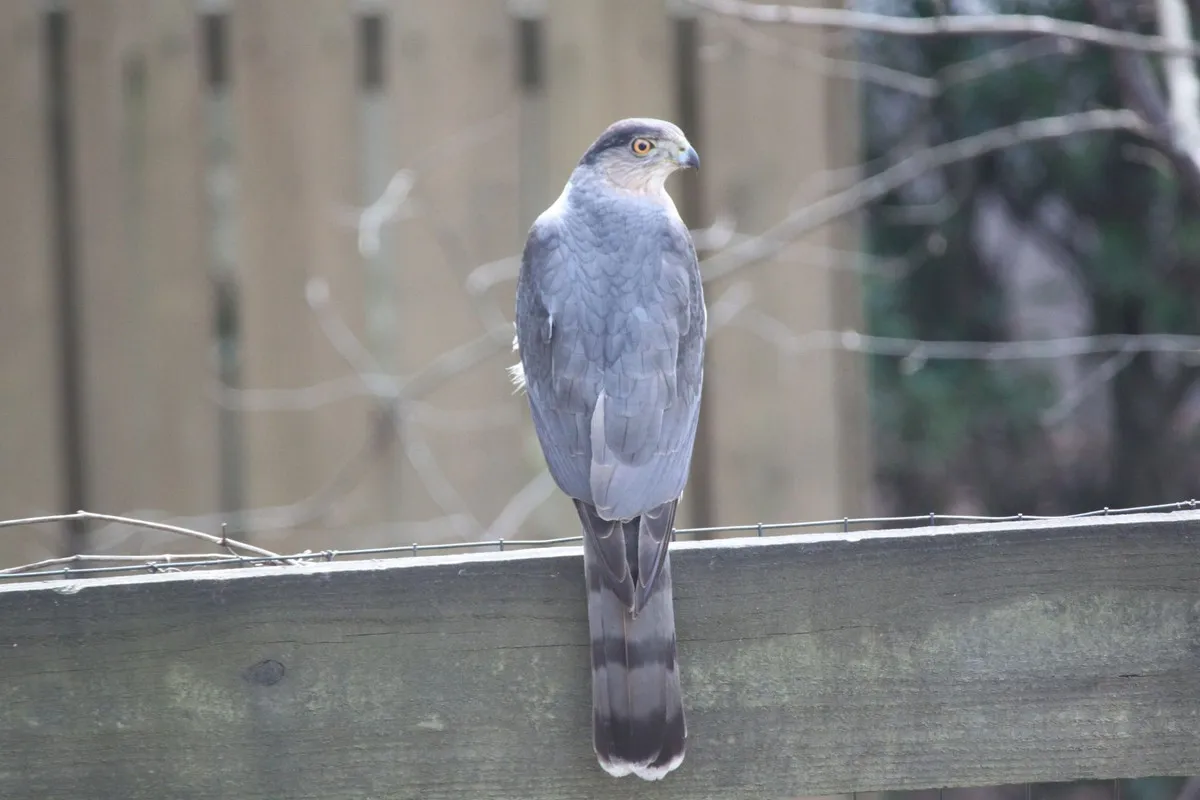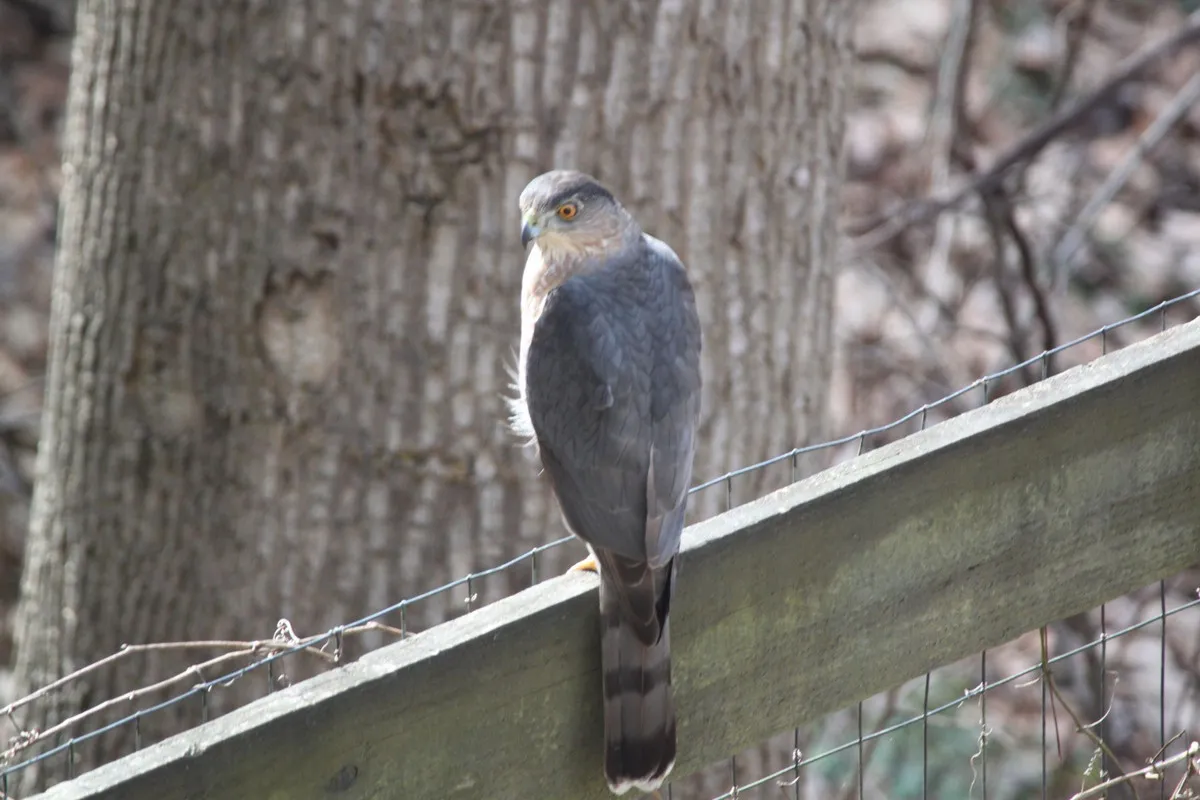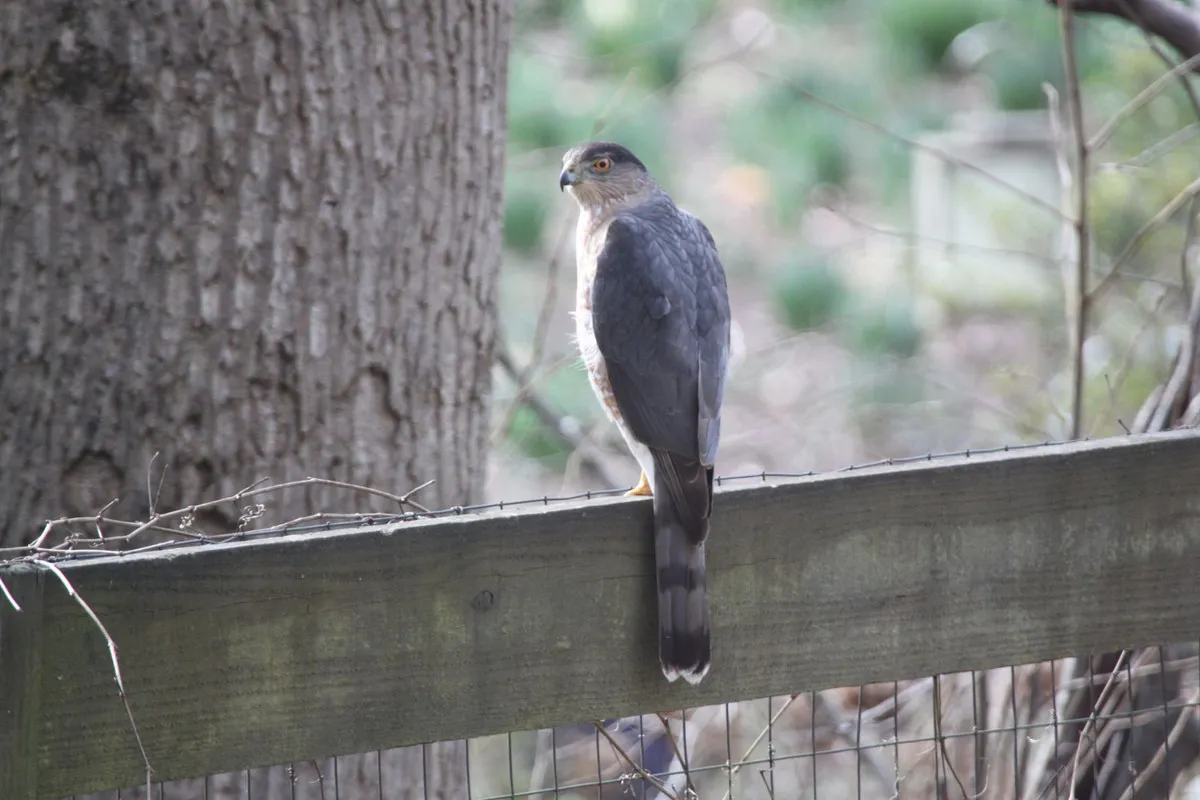
This is a Cooper’s Hawk. Many animals are named by the people who discovered them. A lot of them will simply put their name attached to whatever it is they discovered. So bc Cooper discovered this hawk he got to name it after himself. This is a common hawk to see in my home state of Georgia and bc most people only know the Red-tailed Hawk, bc it’s the state raptor, many people will just call it a Red-tail just bc they are similar in size with the Cooper’s being slightly smaller in weight. You can tell this Hawk by the top blueish gray coloring and the white chest with rusty spots creating lines going across its chest. Younger birds of this species will not have as defined line on its chest and will be brown on top. As the bird ages and molts the pretty defined lines and blue will become more prominent and defined.

Like most raptors, birds of prey or meat eating birds, they can be recognized by talons, sharp beak, and forward facing eyes. Birds with eyes in either side of its head facing outward are more likely to be herbivore or insectivore variety. They like to be where their prey is, so the most common places would be forests and subdivisions with lots of trees. They like to perch on high areas to look down on the forest floor or people’s backyards to spot prey and watch our for predators.

This particular bird was in a friend’s backyard. Standing on his fence looking down at a creek bed that his property overlook. They will usually fly off when approached but this one just turned and stared us down. It may be bc it’s become used to human presents or maybe that day it just didn’t give a fuck and wished a motherfucker would.

This species also has a larger than average tail for it’s body size it can be seen fanned completely out during take off or landing. This bird does not usually fan its tail out on display when just flying about unlike other medium to large raptors like the turkey buzzard or red-tail.

They usually go after rodents and small reptiles. Medium to large raptors won’t usually go after birds unless injured or in open areas where the hawk can hide in front of the sun. This is largely due to the fact that prey birds are more agile and faster at short distances. This makes it easy for them to hide in bushes and spots where the raptors cannot reach them after making a quick sprint for cover.


We were trying to catch a picture from the front, but we didn't want to spook its prey or chase it away. So we are forced to be content with nothing but shots from the back and obscure side.